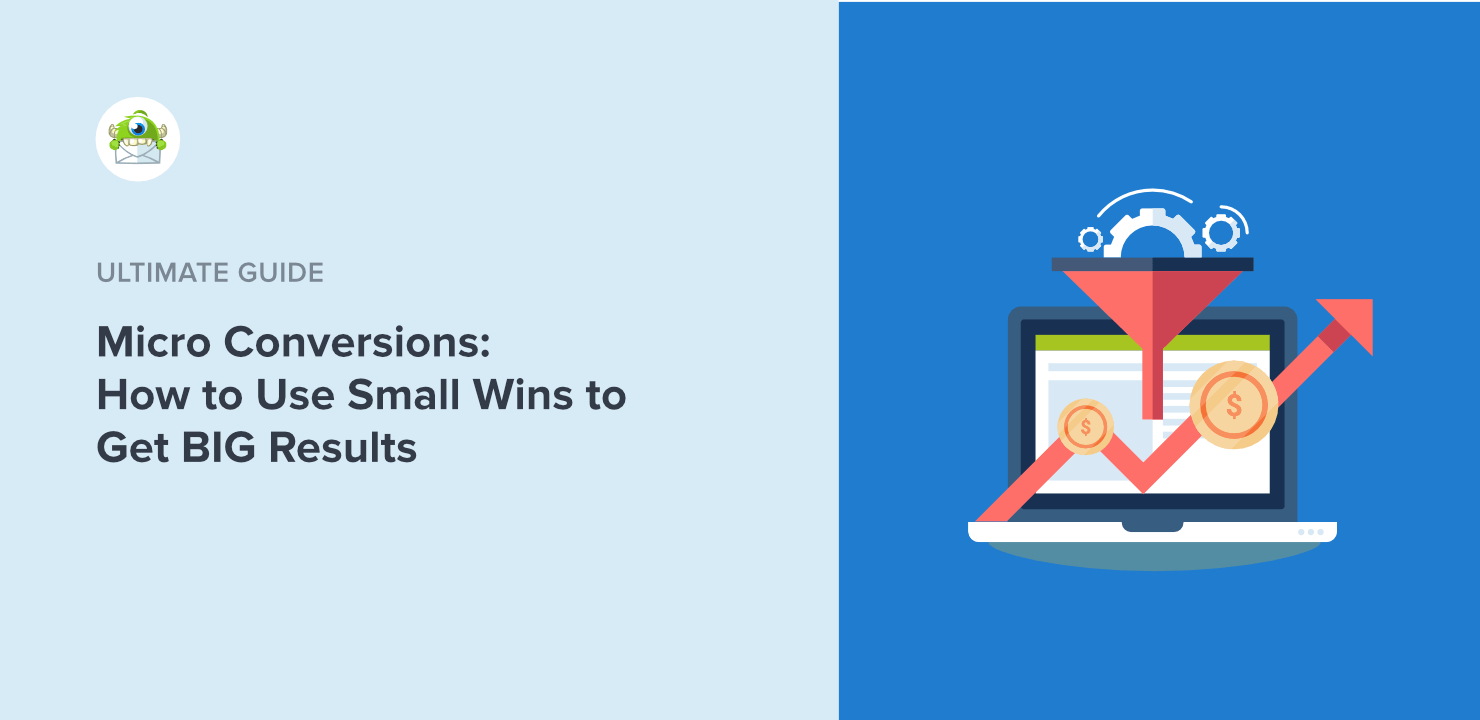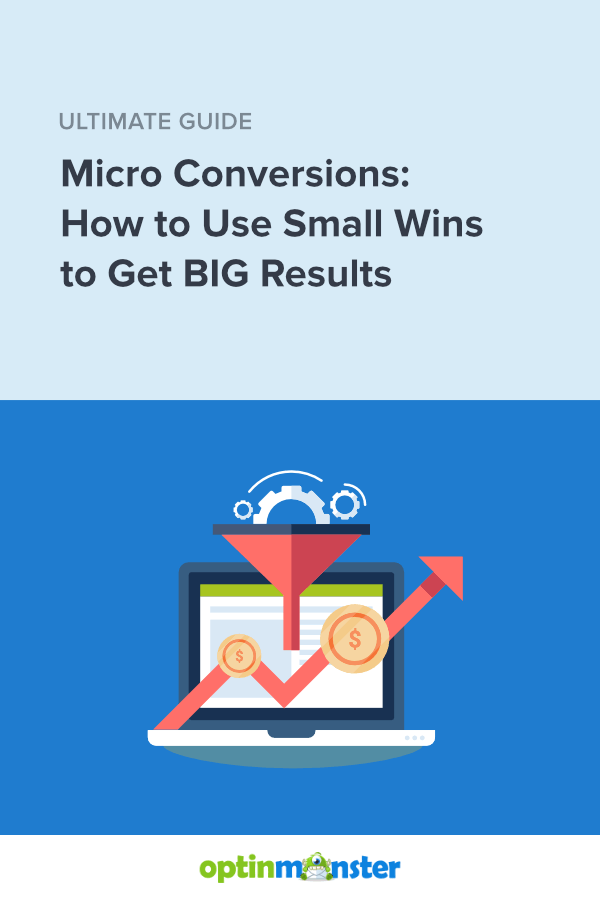When you think of conversions, do you only think of that moment when a visitor to your site becomes a paying customer? It’s true that purchases are the ultimate conversion. However, you’re missing out on a lot of great data by tracking only that single conversion as a measure of success. In this article, we’re going to cover the smaller actions that lead up to the larger goal: micro conversions.
What Are Micro Conversions?
A micro conversion is a single action taken by a visitor that moves them toward the completion of a primary conversion goal (referred to as a macro conversion). Micro conversions are typically actions such as:
- Email Newsletter Signups – Subscribing to your newsletter is a strong indicator of interest.
- Downloading Lead Magnets – Accessing resources like eBooks, whitepapers, checklists, or templates.
- Account Creations – Setting up a user account or profile on your website.
- Adding Products to Wishlist – Saving items for future consideration.
- Adding Products to Cart – Shows purchase intent, even if not completed.
- Viewing Key Pages – Visiting product pages, pricing pages, or service details.
- Engaging with Interactive Elements – Clicking on sliders, calculators, or interactive quizzes.
- Watching a Video – Completing a video view, especially if it’s a product demo or testimonial.
- Social Shares – Sharing your content or products on social media platforms.
- Leaving Comments or Reviews – Providing feedback or engaging with your content or products.
- Using Onsite Search – Searching for specific information on your site.
- Scrolling Through Content – Reaching a particular scroll depth on a page (often used on long-form content).
While none of these actions are your final goal, each one represents a step in the customer journey and progress toward making a sale. And by tracking micro conversions, you’ll have the data you need to improve your marketing strategy and sales funnel
What are Macro Conversions?
A macro conversion is the completion of a primary call to action by your site’s visitors. For eCommerce sites, this is probably always going to be a purchase. Depending on your business or organization’s goals, macro conversions can include:
- Purchasing a Product – Completing a transaction on your site.
- Making a Donation – Contributing funds to support your organization, reflecting strong engagement and commitment.
- Signing Up for a Subscription – Committing to a recurring service or membership.
- Downloading Paid Content – Accessing premium resources like eBooks or courses.
- Upgrading an Account – Moving to a higher-tier plan or paid version of a service.
Why Should You Track Micro Conversions?
Why should be be tracking all of these micro conversions on your site?
Most first-time website visitors won’t jump straight to the macro conversion. That is, they aren’t likely to immediately give you money. You’ll need to guide them through some micro conversions before they feel confident enough in your brand to buy.
These smaller conversions are important conversions to track because they help you:
- understand visitor behavior
- analyze key areas to focus on conversion optimization
- allow you to nurture your leads
- measure the effectiveness of a communication channel
- build the right conversion funnels
How? Let’s go into a bit more detail for each of these benefits.
Understand Visitor Behavior
Even when visitors aren’t buying products on your site, understanding their actions is important and informative. Since people will come to your site for any number of reasons, you’ll want to use micro conversions to show you what those reasons are so you know how to handle them.

The more you know about your visitors, the easier it will be to segment them which means that you can create more targeted campaigns that will guide them to a sale.
Analyze Key Areas of Conversion Optimization Focus
Once you break down visitor actions into smaller micro conversions, you can learn how to optimize key areas of your website.
Take Woodside Communities for example. They already knew that their site traffic was well-qualified. That is, they knew that people visiting their site had a high level of interest in their company. They focused on capturing contact information from as many of those qualified visitors as possible.
To do that, they used the popup campaign below from OptinMonster.

With this popup form alone, Woodside Communities increased their monthly collected leads from 46 to 116.
Overall, the company increased leads by 476% and revenue by $294,435 in under two months.
Read the full Woodside Communities case study.
Nurture Your Leads
Once you’re able to do all of the segmenting and targeting, the leads you get will be better and better. By then, you’ll have even more information to nurture those leads into sales.
Wholesale Suite was used 2-step conversions from OptinMonster to drive landing page traffic. They achieved conversion rates of over 40% and collected 15-20 highly qualified leads every day.

Read the full Wholesale Suite case study.
There are many different ways to nurture your leads. One of the best strategies is to create content that addresses common pain points that potential customers might face. In that content, explain how your product or service can solve that problem.
You can also use personalization to customize communications with potential customers as much as possible. People love being made to feel important, and something as simple as using someone’s name can go a long way to build trust.
Measure Communication Channel Effectiveness
Just as there are different ways to nurture leads, there are also different ways to communicate with leads. When you track your micro conversions, you can see which communication channels are most effective for you and your target audience.
This shows you where you should focus your communication efforts in the future. If your target audience is big on Instagram, but you rarely post there, perhaps it’s time to start focusing more on your marketing efforts there.

You can’t expect your audience to come to you. Instead, you have to go to your audience.
Build the Right Conversion Funnels
With everything we’ve talked about so far we’ve been building toward a single goal: the sale. This means that you’ll be able to map out the right conversion funnels by focusing on the smaller conversions that make up the steps of the entire customer journey:
- A visitor comes to your home page (micro conversion)
- The visitor searches for a product (micro conversion)
- The visitor clicks on the product page for the product (micro conversion)
- They like what they see, so they add the product to their cart (micro conversion)
- The visitor either signs up, logs in, or decides to continue as a guest to the checkout page (micro conversion)
- Finally, the visitor becomes a customer (macro conversion)

Now that you know how important micro conversions are to the success of your online business, what are the best micro conversion metrics to track? Let’s take a look.
Micro Conversion Analytics
Micro conversion analytics are really no different than your standard eCommerce conversion tracking. This means that you can track micro conversions with Google Analytics (GA4), just as you would your other site analytics. If you use WordPress, you can use MonsterInsights to access your GA4 data right in your WordPress dashboard.
Here is what the entire process of analysis looks like in its 4 basic steps:
- What is the macro conversion for your website? That is, what is the final action you want visitors to take? Can visitors easily figure that out?
- List the micro conversions that lead up to the final conversion. What will visitors likely need to do before they are comfortable enough with you to take the final action?
- Figure out where you need to focus your optimization efforts. How well are you presenting the micro conversions to your visitors? Where can you improve?
- Finally, measure, test, and optimize.
Connect Google Analytics to Your WordPress Site
Ready to start tracking data on your WordPress site? Follow our step-by-step guide to adding Google Analytics to WordPress
Now you have a solid overview of micro conversions and how to optimize your site to take advantage of them. Want to learn more about improving your website conversions? Check out these resources:
- What Is a Good Conversion Rate?
- Beginner’s Guide to Conversion Rate Optimization
- 7+ Conversion Rate Optimization Tools: Win More Leads & Sales
- What’s a Winning eCommerce Conversion Rate? Benchmarks & Insights
Want to create incredible optin campaigns to help you grow and segment your email list and keep those small wins building? Join OptinMonster today!











Add a Comment